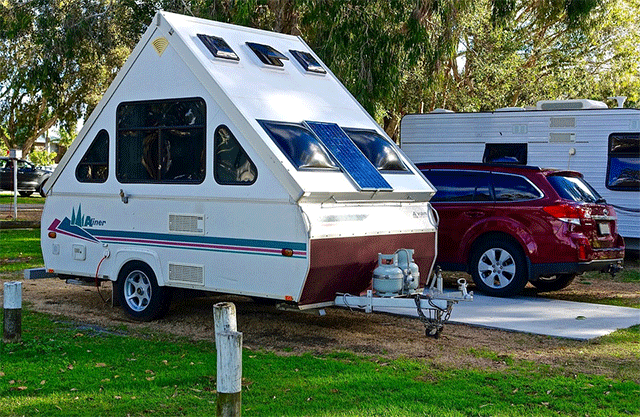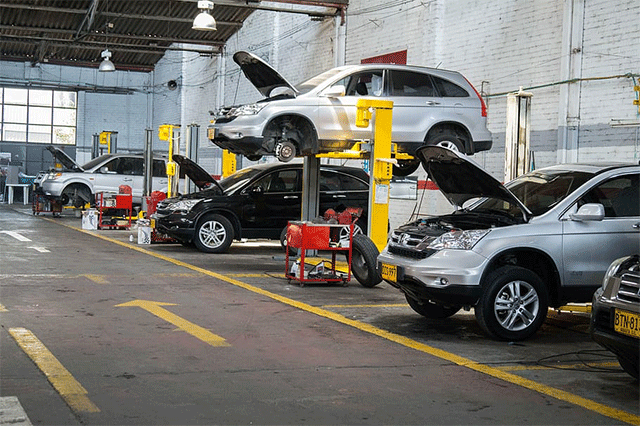A pop-up camper can withstand 40MPH gusts of wind. It is safe for you to enjoy if the weather is windy. You can even use it even during low to moderate wind storms. However, to ensure that it’s fully stable at all times, you should do the following tips as advised by experts:
Table of Contents
How to manage your pop-up camper

1. Plan wisely.
You should always plan ahead if you have a pop-up camper. Be extra aware of the following details:
- time of year
- location
- weather
You should have a solid game plan on how to manage your pop-up camper if you expect certain dates to be windy. It’s best if you can avoid camping during windy dates.
2. Pick a good camping spot.
Choosing a good camping spot will help greatly in maintaining the stability of your pop-up camper. To ensure the stability of your pop-up camper, choose a spot that is not too exposed to the wind. Avoid parking under trees with rotted or broken branches. A spot with a shade that can significantly cover your pop-up camper will be perfect.
3. Guy lines and ground anchors.
If you’re expecting tricky weather during camping, it’s best if you’d use ground anchors. You should also consider tied-down straps. Such will greatly help in stabilizing your pop-up camper. It would also do so much for awnings that can very easily be ripped or blown away during bad weather. You shouldn’t be intimidated by the process because it’s as simple as setting up a tent.
4. Shelter.
This is an important factor if you’d be on a dedicated camping ground. To make things easier for you, you should first inquire if your chosen camping ground has shelter sites. Shelter-in-place sites are normally located in shower facilities and restrooms. If your camping ground has shelter-in-place sites and you’re expecting tricky weather, it’s best to reserve one beforehand.
5. Awning management.
You should always consider your awnings. You should never leave your awning out if you’d be leaving your campsite for long periods. Always ensure that it is securely attached to your pop-up camper. To avoid stress, refrain from having objects that can easily be blown away like tables or camping chairs. Have a checklist at hand to ensure that you never forget to check on your awning.
6. Chocks.
You should have chocks regardless of any weather. It is an essential accessory that will help you maintain the pristine state of your van. Refrain from using plastic chocks if you know that the weather will be windy. Plastic chocks can easily slide aways. To ensure that your wheels are always in place, use high-quality rubber blocks. Good rubber chocks are effective in ensuring that your van will not move or roll in any direction.
7. Have a weather alert radio.
You should always have a weather alert radio with you. One will especially come in handy in cases when the weather is tricky. You should also ensure that you have stocks of fresh batteries. A weather alert radio will always keep you updated and prepared in case of any emergency. As you know that a pop-up camper can withstand 40MPH gusts of wind, it would be easy for you to decide on your game plan should you be made aware that gusts of wind would go beyond 40MPH.
8. Roof management.
Do you have a standard protocol when it comes to your roof? You should consider lowering your roof during nasty weather. Take note though that it should be your last point of action. Lowering your roof should not be your first recourse because it would require time and meticulous steps. You can choose to not lower your roof if the weather is not so bad.
9. Slide-outs.
You should have a game plan and standard protocol if you have a slide-out. You should duly have your slide-out brought in if the wind is nasty. With your slide-out brought in, your van will be more stabilized.
10. Attachment to a tow vehicle.
You should keep your van attached to your tow vehicle in case of nasty windy weather. Such attachment will provide a solid anchor and more stability. You should check out the safest over centre latches from Snap-Flat as they could greatly help in providing additional stability. The more stable and attached your van is, the more secure it would be against strong winds.
11. Stabilizer bars.
You should also have stabilizer bars. Stabilizer bars will help you in towing your pop-up camper properly. Pop-up campers can be easily tucked but they tend to sway about while on the road. To avoid such a scenario, simply use stabilizer bars. Stabilizer bars are effective in distributing the weight of pop-up campers while in transit. Your camper will be more stable if a towed pop-up camper’s weight is distributed evenly.
12. Have a standard.
You should have a strict personal standard when it comes to dealing with nasty weather. You should always be clear and specific when it comes to calling everything off. You should always know when it’s already time to pack up and leave. You should know when it’s time to leave a campsite altogether. Knowing your personal protocol will save you from any kind of trouble. You would never be confused and left unprepared if you’re clear with your safety standards.













